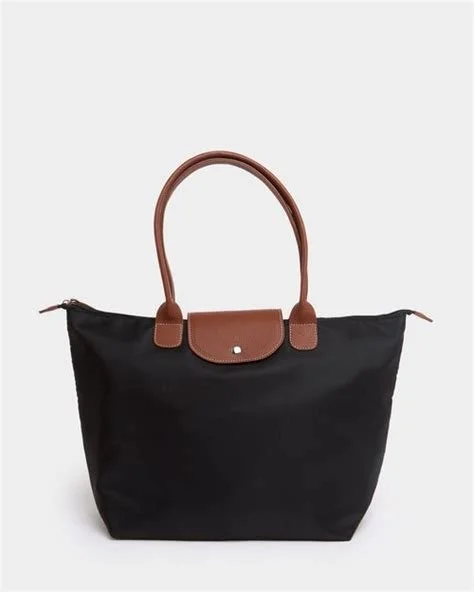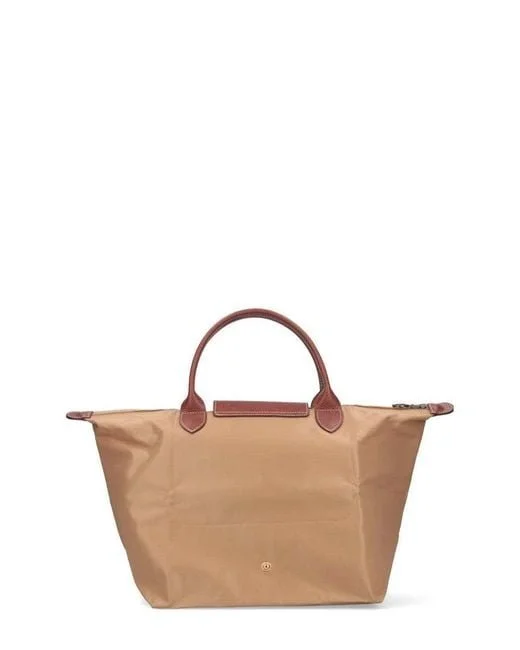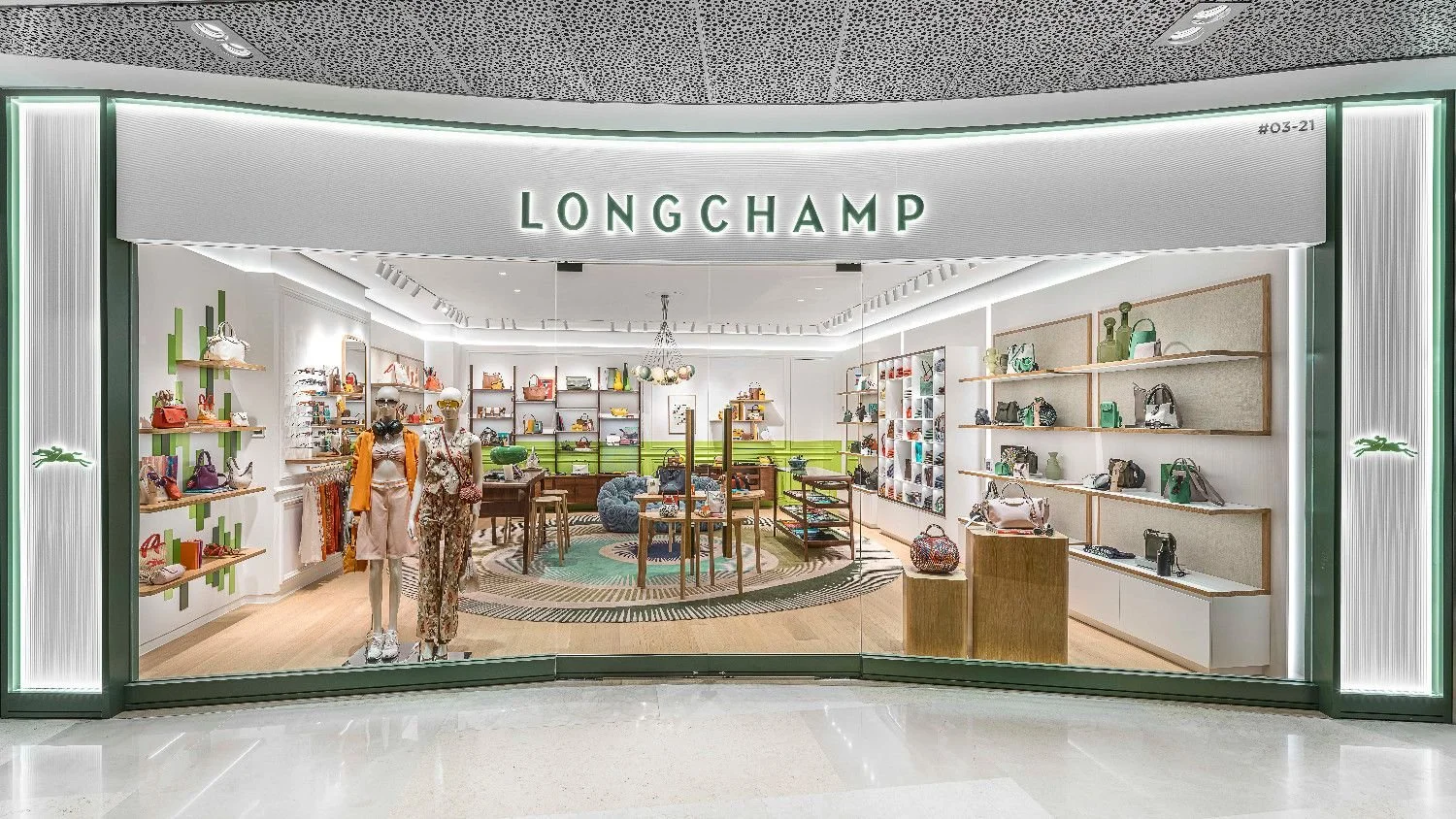Dupes, Design and The Law: When Is Inspiration Theft?
The Case of the Bag Everyone’s Talking About
Dunnes Stores’ folding tote bag, dunnesstores.com
Longchamp Le Pliage bag, lyst.co.uk
In August 2024, Irish retailer Dunnes Stores quietly put a €15 foldable tote bag on its shelves (The Currency, 2024). There was just one little problem: it looked uncannily like Longchamp’s iconic Le Pliage.
The resemblance wasn’t subtle either. From its foldable structure to its neat leather trim, the Dunnes version appeared practically identical to the French luxury house’s bestseller—save for the price tag. A Le Pliage retails at around €120-€130; Dunnes’ offering undercut it by more than 80 per cent.
Unsurprisingly, Longchamp was not amused. Within months, the brand filed proceedings in Ireland’s High Court against Dunnes Stores Unlimited and Dunnes Stores Retailing Unlimited (The Currency, 2024). Dunnes has denied any wrongdoing, but the case has already sparked broader debate.
Unlike counterfeit goods, which deliberately trade on fake logos and misrepresentation, these so-called “dupes” occupy a murkier legal and cultural territory. They mimic form rather than branding, testing the boundaries of design rights and intellectual property. To some consumers, they’re democratising: a chance to buy into a look without luxury prices. To others, they’re little more than theft dressed up as accessibility.
Whatever the court decides, the Dunnes-Longchamp dispute throws a spotlight on fashion’s growing grey zone: when does imitation cross into infringement, and who gets to draw the line? In a market where “dupe culture” drives sales on TikTok as much as Bond Street boutiques, the answer will shape not just one bag’s future, but fashion’s uneasy balance between inspiration and appropriation.
Design Rights: The Invisible Lines
Longchamp Le Pliage bag, Aglaia Magazine
If we’re going to talk about dupes in fashion, we need to talk about where the protections of intellectual property (IP) and design rights actually begin and end. We’ve already established that a dupe isn’t a counterfeit. It doesn’t trade in fake logos, it doesn’t mislead consumers about origin, and it doesn’t pretend to be the genuine article. But that distinction isn’t a “get-out-of-jail-free” card. Dupes can still stray into dangerous territory if they reproduce the protected elements of another design. Which leads to the heart of the issue: where exactly do the protections of intellectual property begin and end?
In the UK and EU, the framework splits into two routes: registered and unregistered design rights. Registered rights are the gold standard. They last for five years initially and can be renewed in five-year increments up to 25 years (GOV.UK). They protect not just shape but the whole visual character—lines, contours, colours, textures, even decorative details. For iconic pieces like the Le Pliage, that can mean real armour.
Unregistered rights are weaker. In the UK, they cover shape and configuration for up to 15 years from creation or 10 years from first sale, whichever comes sooner (Greaves Brewster, 2020). In the EU, the unregistered community right lasts only three years from when the design is first made public (Greaves Brewster, 2020). Most designers, producing at speed and volume, lean on these protections because registering every seasonal item is impractical. But unregistered rights are harder to enforce and much easier for challengers to chip away at.
This is where the invisible line appears. Design law protects “individual character,” but fashion thrives on repetition and reinterpretation. What one lawyer calls theft, another stylist calls homage. That’s why court battles matter—they set the boundaries of originality. Karen Millen v Dunnes Stores (2007) proved the point: Millen showed Dunnes had copied her blouses, and after a long fight, she won (D Young & Co, 2014).
The Longchamp case tests the same threshold. It isn’t about logos, it’s about whether the folding, proportions and materials of Le Pliage are distinctive enough to count as protected design. If Longchamp prevails, high-street “dupe culture” could be chilled overnight. If Dunnes wins, it signals freer rein for retailers. Fashion may thrive on blurred lines, but the law demands someone draw them.
Why Dupes Are Everywhere
Dior Book Tote, All Instyle
Steve Madden Knox Tote (Dior Book Tote dupe), By Corrine Olivier
Why are dupes so prolific? The answer lies in speed, visibility, and access. Fashion now moves at breakneck pace—what debuts on the runway today becomes a TikTok trend by tomorrow. Luxury brands trade in desire, but the hunger for immediacy is fed by retailers who move faster, often using cheaper supply chains to capture the mood of a season in weeks rather than months. Dupes exploit that gap. They don’t have to innovate; they simply translate.
Social media has only supercharged the phenomenon. Platforms like TikTok and Instagram have normalised the “look-for-less” economy (Aquent, 2025). Influencers parade cheaper alternatives, turning dupes into status symbols in their own right, especially among Gen Z. Sharing a savvy dupe spot is as much about cultural capital as it is about cash. Authenticity still matters, but value for money, trendiness and access increasingly trump exclusivity (Business of Fashion, 2023).
Affordability is the sharpest edge of the argument. A survey by purchase data platform Attain revealed that cost is the primary driver of dupe purchases (The Outcome, 2025). Most consumers, regardless of their age, cannot spend hundreds on a bag or pair of shoes, but they still want to signal taste, aspiration, and style. A dupe provides that bridge: close enough to conjure the allure of the original, cheap enough to feel like a win.
Then there’s the law—or lack thereof. Like I said, the fact that dupes aren’t counterfeits doesn’t mean that they can’t breach IP law. However, proving any actual infringement is notoriously difficult, as courts wrestle with the slippery definitions of “individual character” and “likelihood of confusion” (Trademark Lawyer Magazine, 2024). Adidas learned this the hard way when it lost its 2023 case against Thom Browne: a New York jury ruled that Browne’s use of four stripes was sufficiently distinct from Adidas’s three, leaving the sportswear giant empty-handed (AP News, 2023). Even when victories come, as in Ganni’s 2024 win against Steve Madden in Denmark, enforcement rarely travels beyond borders. Madden is blocked from selling the contested design in Copenhagen, but faces no such ban in New York, London, or Paris (The Fashion Law, 2024).
In short: dupes thrive because they are fast, visible, affordable—and legally slippery.
Brand Damage, Reputation & Risk
Famous luxury brand logos, 1stDibs
Why, if it’s so notoriously difficult to prove that dupes breach intellectual property in court, do brands still go through the grind of litigation? The answer is blunt: dupes pose a tangible threat to brand value, and in luxury fashion that threat is existential.
Luxury thrives on more than fine leathers or exquisite stitching. It survives on aura—status, prestige, the almost intangible sense that what you own places you in a rarefied circle. While Gen Z’s tastes may be shaped by sustainability, transparency and authenticity, their limited spending power makes the aspirational pull of luxury even more potent. When a look-for-less gains wider visibility than the original, it drains that aura of exclusivity. An icon ceases to feel iconic if its silhouette is everywhere, whether through outright counterfeits or mass-market lookalikes. Prestige lives or dies by perception: if the original is seen through the lens of cheap alternatives, the ability to charge premium prices weakens.
Brands with instantly recognisable assets—bags, logos, monograms, fragrances—are especially exposed. Each copy, however imperfect, chips away at distinctiveness. In beauty, dupe mascaras and perfumes borrow packaging, colours, even cheeky naming conventions, leaving consumers unsure whether they’re buying homage or theft (Troutman Pepper Locke, 2025). The effect is slow erosion: consumers stop associating the product with rarity, and begin linking it with mass consumption.
The financial stakes go beyond reputation. Every dupe sold represents an opportunity cost. Some consumers will never trade up, seeing the cheaper version as “good enough.” Others may eventually splurge on the real thing, but that halo effect is unpredictable and often outweighed by lost sales. Over time, a market saturated with copycats risks softening demand for originals.
Litigation itself is a gamble. Intellectual property cases require ironclad registrations—trade marks, design rights, trade dress—and hard proof of consumer confusion. Without these, costs can eclipse damages. As Mark Brutzkuz of Stubbs, Alderton & Markiles LLP noted in Glossy, many cases are not worth pursuing if legal spend outweighs harm. Yet walking away risks signalling weakness. Worse, lawsuits can backfire, amplifying the dupe’s visibility and casting the brand as litigious or detached from cultural reality.
In the end, luxury houses sue not because success is guaranteed but because silence is riskier. To guard prestige, they must be seen to defend it—even if the fight is long, costly, and uncertain.
Law, Ethics and Fashion’s Future
Hermès Himalaya Birkin 30, Sothebys
Walmart “Wirkin” Bag, Variety
Litigation around dupes is forcing fashion to evolve. The EU’s new Designs Regulation broadens what counts as a protected design, extending to digital features such as animation and transitions—vital for the metaverse and virtual assets (Marks Clerk, 2025). Designers can now register work under the Ⓓ symbol, signalling legal cover in both physical and digital markets. Added to this is legislation requiring brands to shoulder financial responsibility for the entire lifecycle of their products, from manufacture to disposal. It’s a clear shot at fast-fashion models, designed to fold environmental and circularity costs into the business of making clothes (Vogue Business, 2025).
But the ethics of dupes are not so easily legislated. Fashion has always been borrowed—today’s “copy” can be tomorrow’s reference point. Many dupes sit in a moral grey zone: not outright counterfeits, but heavily “inspired by” pieces that don’t trick consumers into believing they are the real thing (Fashion United, 2024).
The impulse to buy them is certainly understandable. Everyone wants something stylish without paying stratospheric prices. Yet it’s worth remembering why luxury goods cost what they do. Materials, construction and craftsmanship create products that endure. For many, especially younger buyers, these items are framed as “investment pieces”.
Take the Hermès Birkin. Crafted from premium leathers such as Togo or Epsom, finished with hardware plated in precious metals, each bag is built by a single artisan over forty hours (Global Boutique, 2025). The result is legendary longevity: a Birkin keeps its structure even unlatched, and with care, it only improves with age (Glamour, 2025). Contrast that with Walmart’s “Wirkin”—a $78 imitation that riffed blatantly on the Birkin silhouette (Business Insider, 2025). It wasn’t sold as genuine, but it leaned heavily on the original’s prestige. Tempting, perhaps, but made of cheap synthetics and destined to collapse within seasons. In fact, reviewers actually singled out issues like a strong chemical smell, floppy structure, poor finishing, and overall tackiness (Global Boutique, 2025).
In the end, the dupe debate isn’t just legal—it’s about value, longevity and truth in design. Fashion thrives on references, but when a copy strips away quality and craft, what remains is only surface.
Beyond the Copy: Ownership and Identity
Longchamp Orchard Road storefront, Grazia Singapore
The debate over dupes is about far more than handbags and hashtags. At its core lies the question of where ownership ends and identity begins. Designers deserve protection for the labour, vision and cultural capital stitched into their work. Strip away those safeguards and originality risks becoming disposable.
Yet fashion has always thrived on repetition and reinterpretation. Silhouettes resurface, references are re-cut, and yesterday’s trends become tomorrow’s revival. Copying can be theft, yes—but it can also be dialogue, a way for fashion’s DNA to evolve rather than ossify.
The challenge is in drawing the line: between homage and hollowing out, between a lineage of ideas and a lazy reproduction. Protect the origin, certainly, but leave space for reinvention too.
Because fashion at its best is not just about who stitched the first seam, but how that seam is re-imagined. The real question isn’t whether a dupe looks convincing, but whether it carries any of the craft and meaning of the original. A shadow may resemble the body that casts it, but it will never bear the same weight.








